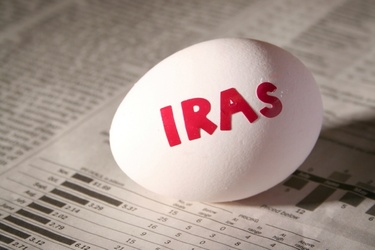
Form 8606: Nondeductible Individual Retirement Accounts (IRAs) is a tax form shared by the Internal Revenue Services (IRS) and are made of by filers who make nondeductible contributions to an IRA. The tax Form 8606 has gained some level of importance; thanks go to the popularity of the Roth IRA and the rollover qualification of an after-tax asset from qualified plans
A new form is yearly required to be filed when nondeductible contributions are made. Contributions that are done to an Individual Retirement Account (IRA) are generally deductible from ordinary income.
Under the particular situation, individuals, who are involved in an employer retirement plan and whose family have a specific Modified Adjusted Gross Income might not be capable of making these deductible contributions. They can still make contributions to an IRA, but it will not reduce their ordinary income.
Each time clients consider IRA contribution limits, they usually think of the amount that will be contributed and deducted from income by the client, example $5,500 in 2016 with a $1,000 catch up provision for clients of age 50 and above. However, clients who have income exceeding the yearly inflation threshold have reduction limited for them. In 2016, the deduction phased out for the single taxpayer when pay ranges between $61,000 and $71,000 and for married when income range between $98,000 and $118,000.
However, a client may make a nondeductible contribution to an IRA even when his or her income is so high to be qualified for a tax deduction. These nondeductible contributions from the 'basis' in a client's IRA, and are taken tax-free (unlike the regular deductible contributions, that are taxed under the general rules when distributed).
If a client’s IRA is made up of basis, then a part of each distribution will represent the basis, and the amount will be taken free of tax. If a taxpayer maintains many IRAs, the cumulative amount of nondeductible IRA contributions is made use of in determining the part of a withdrawal from a specific account that is nontaxable.
Tracking Basis Clients maintains track of IRA basis on Form 8606 that must be filed with the IRS if the client has made a nondeductible contribution to an IRA for that particular year, or if he or she got a distribution from an account that has a basis that is more than zero. Further, the form is necessary if the client made a Roth IRA conversion.
Form 8606 must be filed if the client gets transfer funds or a distribution from an inherited that lack basis. A penalty of $50 applies is charged for failing to file a yearly Form 8606 when one is supposed to, and a penalty of $100 applies to clients that overstate IRA basis.
It is general that all contributions and conversion made to Roth IRAs are after-tax nondeductible. It means that distributions are generally taken free of tax. It may however not be the case for some 'premature' Roth IRA distribution.
A premature Roth IRA distribution is one that withdrawn before the fund becoming 'eligible' for withdrawal. Generally, Roth IRA contributions are eligible once the Roth has been held for five years and when the owner of the account is at minimum 59 1/2 years old, basis tracking in more critical after this point.
However, basis tracking is initially relevant for Roth IRA holders due to premature distributions are withdrawn based on ordering rules that ascertain which Roth funds are distributed first. Roth IRA contributions are shared first, which is followed by conversions and lastly, earnings on the account value.
If a client has done many conversions, the funds that were earliest converted are withdrawn first. The part of a transformation that is pre-tax is removed before any part of the conversion that was after-tax. If the converted fund was not kept in the Roth for a minimum of five years, a daily 10 percent distribution applies if the client makes a withdrawal of fund before he or she gets to 59 1/2 year old.
In conclusion, IRA basis tracking is an often overlooked task, but a comprehension of the rules can be of help to the client in avoiding unnecessary taxes and reporting penalties.
